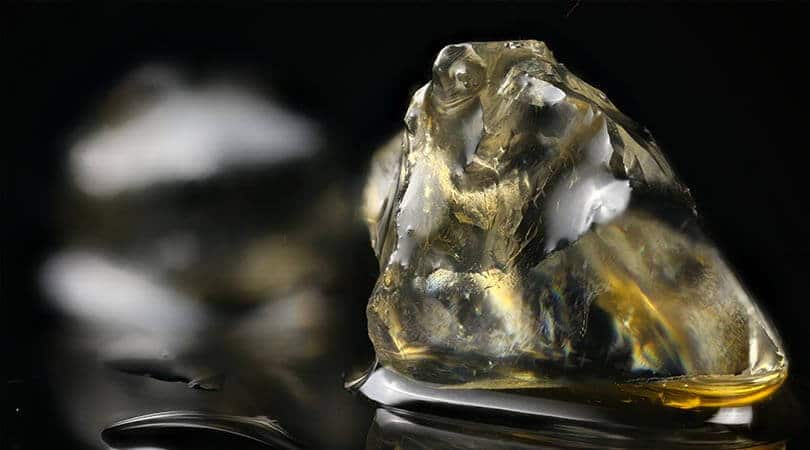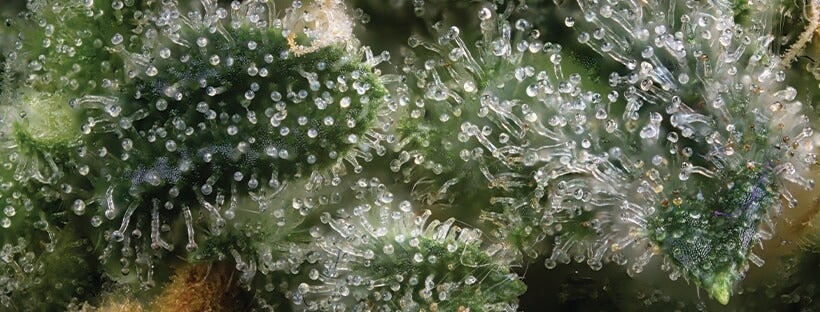Marijuana 101, Online Dispensary
What are Terpenes?
Written and Fact Checked by: S. Zulfiqar
You must have noticed that there are different aromas in different types of cannabis strains. The organic compounds that give these plants a unique aroma are called terpenes. Providing the aromatic feeling isn’t just what they are about. One of their functions is also to influence the effects of the cannabis plant. It does so by interacting with the cannabinoids.
While a lot of research is being conducted to find more about the cannabis plants, till today, over 100 different terpenes have been discovered. Like all plants have their unique properties, so does the plant we are talking about. Every strain of cannabis has its composition along with a unique terpene type. This means that if a strain like Dinafem Cheese Marijuana or simple Cheese along with its fellow descendants will have a cheese-like odour. In comparison, the Blueberry Marijuana Strain will smell a lot like berries.
The interaction of terpenes and phytocannabinoids is said to be more effective than consuming either CBD or THC. A lot of people believe it to be true as they have experienced it, and that is why it’s also referred to as ‘the entourage effect.’ Some also believe that cannabis terpenes might well be the reason behind why different strains have different effects. Also, the various strains of the cannabis plant are often differentiated by their aromas. This is backed by some research. However, more research is needed to be sure about the matter.
Marijuana Terpenes
Like there a lot of strain varieties of cannabis, of course, there are a lot of different hemp terpenes as well.
- Some types of them help us feel more relaxed than others like myrcene. It’s considered one of the most prominent types of terpenes that is present in the cannabis plant. It is a type of terpene that is known for giving consumers stress relief and relaxed feelings. This terpene is found in strains like Granddaddy Purple, Pure Kush, Grape Ape, and Blue Dream. The people who consume these strains know that they are responsible for making them relax and forget about all the worries. While some active strains are all about giving us more focus and uplifting feelings, for example, Ghost Train Haze and Jack Herer.
These terpenes are also found in other plants like mangoes. The sweet and pleasant aroma of this lovely tropical fruit is because it has some amount of this compound, i.e. myrcene. As already mentioned above about myrcene that it’s present in a lot of strains of cannabis, so it is believed that eating a mango before or after smoking strains that have myrcene will either enhance the effects on the consumer or they make the effect last longer. It’s all good till there, but here’s what the problem is; An average cannabis strain that has myrcene has about 2 mg of it while an entire average mango carries roughly about 0.08 mg of myrcene.
Let’s take a look at the various types of terpenes that are found in different types of cannabis strains:
The first up is, of course, myrcene that we discussed above. It has its unique earthy, herbal aroma that also sometimes resembles cardamom and cloves. This type of terpene vaporizes at 167°C (332°F). It’s known for its relaxing effects. That means if you have had a tiring day and you’re back home and don’t have other things to do, you can surely go for a smoke round. It has plenty of potential therapeutic importance. It may help with treating conditions like inflammation, insomnia, and other pains. Apart from cannabis, myrcene is also found in mangoes, lemongrass, and hops.
Stains that contain myrcene are Granddaddy Purple, OG Kush, Pure Kush, Grape Ape, Blue Dream, and Cherry Pie.
- Next up is Limonene that indeed has the citric aroma, of course, and is known for its effects like stress relief and uplifting the mood. It vaporizes at 176°C (348°F) and the potential benefits include help in treating depression, inflammation, pain, and anxiety. Apart from cannabis, it’s present in peppermint, rosemary, and juniper.
Strains with limonene are Do-Si-Dos White Fire OG and Wedding Cake.
- The next in line is Caryophyllene, which is another exciting type of cannabis terpene that has a spicy pepper-like aroma. It also sometimes gives a woody and clove-like smell and has stress-relieving effects. Its boiling point is 130°C(266°F) and can potentially treat pain, anxiety, and ulcers and is commonly found in spices like black pepper, cinnamon, and cloves, etc.
Cannabis strains that carry this type of terpene are Original Glue and Purple Punch.
- Terpinolene usually has a piney, herbal and floral aroma. It has an uplifting effect, which means you can certainly go for a weed session if you’ve been down lately. It vaporizes at 186°C (366°F) and potentially has antibacterial and anti-fungal values. Other than cannabis, it’s found all over nature, including tea tree, cumin, and nutmeg, apples.
Ghost Train Haze, Chernobyl and Jack Herer contain terpinolene.
- The last on the list is Pinene. It has a great pine-like aroma, which gives an amazing feeling. After smoking it, consumers feel more alert as it also counteracts some effects of THC. So if you think you should be up and active, instead of down and lazy, this is the strain that you should look up to. The boiling point of pinene is 155°C(311°F). The therapeutic benefits of it help treat asthma, inflammation, pain, ulcers, and anxiety.
The popular strains that contain pinene are Snoop’s Dream and Critical Mass.
Now that you’re aware of what hemp terpenes are, how they work, and which strains contain which sort of terpenes, all that’s left for you to do is to try different strains and see how you react to them. Mix things up and notice the ones that suit you. Giving them at least one try before you can finally make your mind regarding which cannabis strain is your favorite. And while you’re at it, make sure to take a slow start before you increase your intake because it’s just the better way of doing it.
Related Reads: 8 Things Smoking Weed Does to Your Body, What is Indica Marijuana?
References
- Booth J, Bohlmann J. Terpenes in Cannabis sativa – From plant genome to humans. Plant Sci. 2019 Jul;284:67-72.



